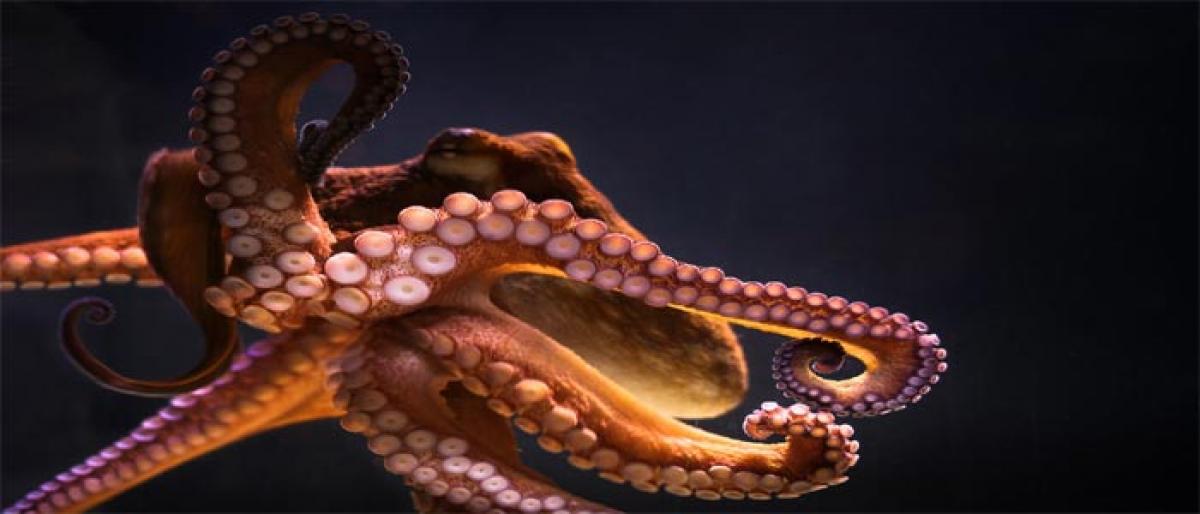Live
- HMWSSB MD holds review meeting on OTS-2024 scheme
- Dhobi Ghat assessed for potential to host sports complex
- SCR bets on LHB train coaches for safety
- SVU felicitates best teachers
- Tata Group to market Araku coffee
- Union Min assures development of infra in tribal mandals
- KTR, Harish will turn political rivals soon: TPCC Chief
- Annabhishekam held at Sri Kapileswaa Swamy temple
- Festive glow of Karthika Pournami: Women celebrate Karthika Pournami with grandeur
- Japanese Princess Yuriko dies at 101
Just In

Scientists have found a way to develop a synthetic \"camouflaging skin\" inspired by studying and modelling the real thing in octopus and cuttlefish.
New York : Scientists have found a way to develop a synthetic "camouflaging skin" inspired by studying and modelling the real thing in octopus and cuttlefish.
For the octopus and cuttlefish, instantaneously changing their skin colour and pattern to disappear into the environment is just part of their camouflage prowess.
These animals can also swiftly and reversibly morph their skin into a textured, 3D surface, giving the animal a ragged outline that mimics seaweed, coral, or other objects it detects and uses for camouflage.
In a study published in the journal Science, the researchers reported development of synthetic tissue groupings that allow programmable, 2D stretchable materials to both extend and retract a range of target 3D shapes.
The team's pneumatically-activated material takes a cue from the 3D bumps, or papillae, that cephalopods such as such as octopus and cuttlefish can express in one-fifth of a second for dynamic camouflage, and then retract to swim away.
Papillae are examples of a muscular hydrostat, biological structures that consist of muscle with no skeletal support (such as the human tongue).
"Engineers have developed a lot of sophisticated ways to control the shape of soft, stretchable materials, but we wanted to do it in a simple way that was fast, strong, and easy to control," said lead study author James Pikul, assistant professor at the University of Pennsylvania.
"We were drawn by how successful cephalopods are at changing their skin texture, so we studied and drew inspiration from the muscles that allow cephalopods to control their texture, and implemented these ideas into a method for controlling the shape of soft, stretchable materials."
"This is a classic example of bio-inspired engineering" with a range of potential applications," said Roger Hanlon of Marine Biological Laboratory in Massachusetts, US.
For example, the material could be controllably morphed to reflect light in its 2D spaces and absorb light in its 3D shapes.
"That would have applications in any situation where you want to manipulate the temperature of a material," Hanlon added.

© 2024 Hyderabad Media House Limited/The Hans India. All rights reserved. Powered by hocalwire.com







